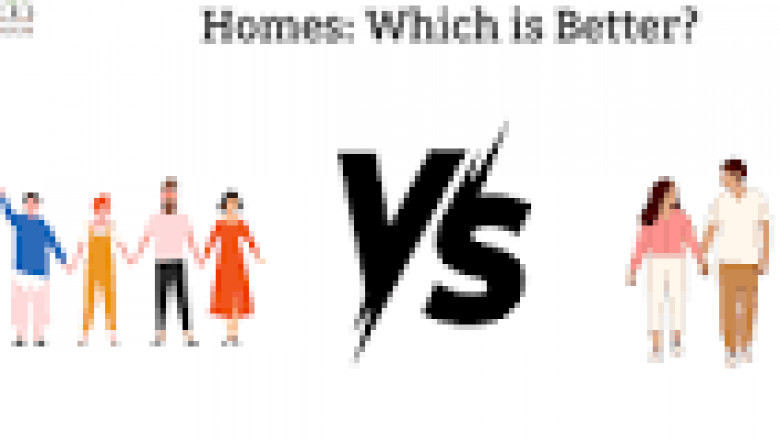views
Each housing model caters to different needs, budgets, and mindsets. While gated communities offer convenience, security, and amenities, independent houses appeal to those who value space, autonomy, and long-term capital appreciation. In this article, we explore the features, benefits, and trade-offs of both options—and how buyer preferences are shifting in modern India.
What is a Gated Community?
A gated community is a residential enclave, usually developed by a real estate builder, offering:
-
Controlled access with security
-
Standardized units (apartments, villas, or row houses)
-
Common amenities like clubhouses, parks, gyms, and swimming pools
-
Shared maintenance and community management
These are typically located in urban or semi-urban areas and attract working professionals, nuclear families, and retirees.
What is Independent Housing?
Independent housing refers to stand-alone residential units such as individual houses, bungalows, or duplexes, built on privately owned plots. Owners have complete control over:
-
Design and construction
-
Space utilization
-
Customization
-
Maintenance and upgrades
These are found both in cities and outskirts, and appeal to families seeking privacy, long-term investment, and larger living areas.
Key Factors Buyers Consider
1. Security and Safety
-
Gated Communities: Offer 24/7 manned security, CCTV surveillance, visitor tracking, and restricted access, which is highly appealing to nuclear families, working couples, and senior citizens.
-
Independent Houses: Security depends on the neighborhood or additional investments like private guards and home security systems. Vulnerability is higher without organized support.
Buyer Trend: Urban buyers increasingly prioritize safety—especially women and elderly residents—making gated communities more attractive.
2. Amenities and Lifestyle
-
Gated Communities: Provide shared amenities like parks, gyms, sports facilities, and co-working spaces, promoting a modern, active lifestyle and social interaction.
-
Independent Homes: Offer none by default. Owners must invest separately in facilities or depend on public infrastructure.
Buyer Trend: Families with children or elderly members lean towards the convenience of ready amenities within gated premises.
3. Freedom and Customization
-
Gated Communities: Limited customization allowed. Structural changes are often restricted by housing association rules.
-
Independent Homes: Total design freedom. Owners can choose layout, materials, and expansions according to budget and preference.
Buyer Trend: Buyers valuing autonomy, architectural uniqueness, or future expansion prefer independent homes.
4. Maintenance and Management
-
Gated Communities: Professional maintenance is managed by RWA (Resident Welfare Associations) or facility management firms.
-
Independent Homes: Owners are responsible for everything—plumbing, electricity, security, and common area upkeep (if any).
Buyer Trend: Busy professionals prefer the low-effort living of gated communities.
5. Cost and Affordability
-
Gated Communities: Cost-effective in terms of upfront investment, especially with apartment models. Maintenance charges are recurring.
-
Independent Homes: Higher initial investment due to land cost, legal work, and construction expenses, but fewer recurring community fees.
Buyer Trend: Budget-conscious first-time buyers opt for gated apartments; long-term investors and affluent buyers may lean toward independent plots.
6. Privacy and Space
-
Gated Communities: Shared walls, floors, and amenities can reduce privacy. Even luxury villas are part of a common ecosystem.
-
Independent Homes: High degree of privacy and ownership of land—more suitable for large or joint families.
Buyer Trend: Buyers seeking peace, garden space, or home offices post-COVID are reconsidering the value of independent homes.
7. Location and Accessibility
-
Gated Communities: Usually located in well-planned areas or on city outskirts with upcoming infrastructure. Developers often ensure access to schools, malls, and highways.
-
Independent Homes: Prime locations may be limited or cost-prohibitive. Plots in developed areas are rare and expensive.
Buyer Trend: Gated communities score higher on location planning and ease of commute, especially in Tier 1 and Tier 2 cities.
Shifting Buyer Preferences: Post-Pandemic Trends
The COVID-19 pandemic changed how people view homes:
-
Demand for more space (home offices, balconies, open areas)
-
Preference for low-density living
-
Emphasis on health, wellness, and green spaces
This led to a renewed interest in independent houses and villa plots, especially in peri-urban zones like:
-
Whitefield and Devanahalli (Bengaluru)
-
OMR and ECR (Chennai)
-
Hinjewadi (Pune)
-
Noida Extension (Delhi NCR)
Simultaneously, gated villa communities offering independent-like homes with shared amenities have gained popularity—bridging the gap between the two models.
Legal and Regulatory Aspects
-
Gated community projects come under RERA, ensuring accountability, defined timelines, and builder transparency.
-
Independent homes may not be covered unless part of a plotted development scheme. Buyers must verify title deeds, zoning permissions, and building approvals themselves.
Environmental and Sustainability Factors
-
Gated communities increasingly integrate green building features, rainwater harvesting, solar energy, and waste management.
-
Independent houses allow eco-conscious owners to implement custom sustainable solutions like composting pits, rooftop gardens, and smart energy systems.
Conclusion
Choosing between a gated community and an independent house ultimately depends on individual preferences, lifestyle needs, and financial capabilities. While gated communities offer convenience, safety, and community living, independent houses provide freedom, space, and long-term value.
As Indian cities expand and digital infrastructure improves, both housing formats are evolving to meet the demands of a dynamic buyer base. Hybrid models like gated villa communities or plotted developments with shared amenities are emerging as ideal compromises.
At HexaHome, we help buyers navigate these choices by offering verified listings, location insights, and lifestyle consultations—whether you're seeking an independent home or a flat in a gated community.
With the technological support of Hexadecimal Software, our platform leverages smart filters, 3D walkthroughs, and AI-based personalization to connect buyers with properties that best match their lifestyle and financial goals.
Together, HexaHome and Hexadecimal Software are redefining home discovery and helping Indians make smarter, more confident property decisions.














Comments
0 comment